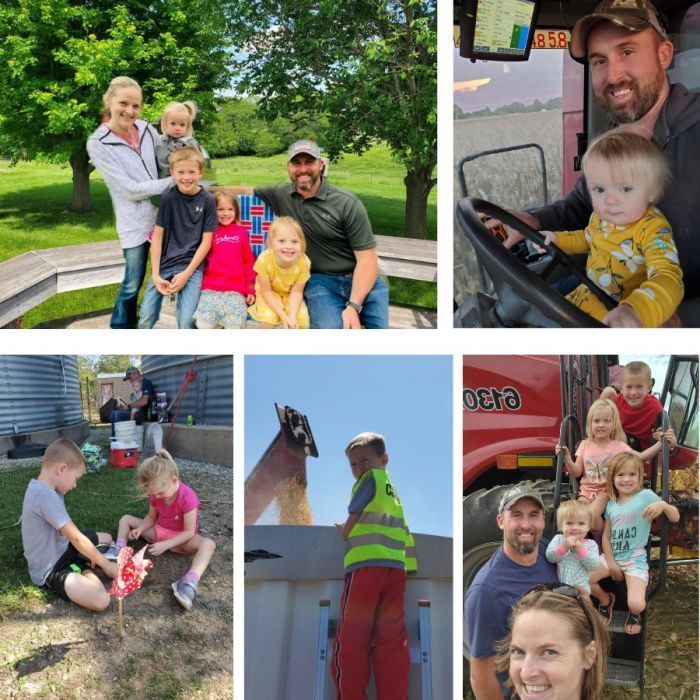3 Tips to Stay Sane During Harvest

3 Tips from Seys Farms
Like any farm household, spring and fall are not only times to relish in the changing of the seasons but hopefully reaping the bounty of your hard work and blessings of the year. These times are also filled with stress, chaos, and if we’re honest, a few choice words muttered under our breath. We are no amateurs when it comes to juggling full time jobs, a side business, farming, and a house full of kids. We’ve even survived 1 baby during planting and 2 during harvest. It’s funny how in a working farm family, a timely placed leave of absence from work during the busiest seasons can actually reduce stress. This fall will be a new one for us, requiring us to spend more time watching from the sidelines and less actually in the action. I was in a serious car accident in early August that will require months of rehabilitation and the inability to be left alone with our youngest two children. That’s a story for another day but as we head into another busy season, I have some tips on how to stay sane during a season of stress.
1 - The Boy Scouts said it well, “Be Prepared”
Equipment gets moved to different fields and your minivan might be the closest service truck or first aid station. Try and keep an assortment of commonly used fix-all items: zip ties, duct tape, paper towels, hand goop, a crescent wrench, a bucket or container to catch a grain sample, and of course snacks in your primary vehicle. If your agenda is also full of kids and afterschool activities, a change of clothes for yourself might also be a good idea. Another habit we’ve gotten into during the busy season is sleeping in tomorrow’s clothes. The kids actually started doing this on their own and it’s great. After a late night or a long and busy day anything you can do to avoid a battle in the morning is worth it.
2 - Love means never saying no to pizza
Feeding an army is also something that usually comes with the territory. Meal prep and one pan/pot meals make life so much easier. Not just for getting field crews fed but making things easier the next morning. I try and make pancakes, waffles, sausage, egg casserole muffins and other breakfast items to stock the freezer so the kids can have a quick and hot breakfast after a late night. There are so many great field meal guides and professionals to find online but a favorite around here are hobo dinners- a foil packet dinner with hamburger, potatoes, and veggies. There is no shame in ordering Casey’s pizza, even if it’s the third time this week!
3 - Go with the flow and jest
Communication and flexibility are also keys to managing stress and expectations. As seasons change and you balance the demands of late nights and long weeks, things will also change in your household. Roles will shift and demands will be greater. This is especially true when you start adding children into the mix. Bedtime routines are no longer routine and quality family time can become a few fleeting minutes enjoying a meal on the tailgate. Find a method that works for you, maybe it’s a field list on the fridge that can act like a countdown calendar for the kids or sending lighthearted memes and emojis throughout the day to ease the frustration, and always remembering that “I’ll be home soon” undoubtedly means they’ll be a breakdown or some other circumstance that delays that arrival.
I don’t pretend to have it figured out but over a decade later we have figured a few things out and learned how to navigate the busy seasons, even if just for the first few weeks!











































































































